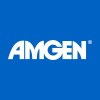A Phase 1 Study of AMG 211 in Participants With Advanced Gastrointestinal Cancer
GI Adenocarcinoma

About this trial
This is an interventional treatment trial for GI Adenocarcinoma focused on measuring Amgen, Phase 1, Clinical Trial, Oncology, GI adenocarcinoma, Immunotherapy
Eligibility Criteria
Inclusion Criteria:
- Informed consent provided
- 18 years or older
- Advanced relapsed/refracted gastrointestinal adenocarcinoma
- At least 1 measurable tumor lesion
- Tumor tissue available or is willing to undergo biopsy of a tumor lesion before the start of treatment
- Adequate hematological, renal, and liver function
- Body weight ≥ 45 kg
- Other inclusion criteria may apply
Exclusion Criteria:
- Malignancy other than gastrointestinal (GI) adenocarcinoma requiring current therapy
- Evidence of uncontrolled systemic disease, active infection, Hepatitis B and/or C, human immunodeficiency virus (HIV), history of cardiac disease, history of significant central nervous system (CNS) disease, history of chronic autoimmune disease (with the exception of stable type 1 diabetes)
- Major surgery within 28 days of study day 1
- Currently receiving treatment in another investigational device or drug study, or less than 28 days since ending treatment in another investigational device or drug study. Other investigational procedures while participating in this study are excluded. Exception to this criterion is the participation in the optional Imaging Study and all procedures related to this study.
- Treatment with any chemotherapy, radiotherapy, immunotherapy, biologic, or hormonal therapy for cancer within 14 days prior to study entry and not recovered from treatment
- Unresolved toxicities from prior anti-tumor therapy
- Males or Females of reproductive potential, and unwilling to practice an acceptable method of effective birth control while on study through 30 days after receiving the last dose of study drug
- Females who are pregnant, planning to become pregnant, lactating/breastfeeding or who plan to breastfeed while on study through 30 days after receiving the last dose of study drug
- Other exclusion criteria may apply
Sites / Locations
- Research Site
- Research Site
- Research Site
- Research Site
- Research Site
Arms of the Study
Arm 1
Arm 2
Arm 3
Arm 4
Arm 5
Arm 6
Arm 7
Arm 8
Arm 9
Arm 10
Arm 11
Experimental
Experimental
Experimental
Experimental
Experimental
Experimental
Experimental
Experimental
Experimental
Experimental
Experimental
AMG 211 200 μg/day for 7/14 Days
AMG 211 200 μg/day for 14 Days
AMG 211 400 μg/day for 14 Days
AMG 211 800 μg/day for 14 Days
AMG 211 1600 μg/day for 14 Days
AMG 211 1600 µg/day for 28 Days
AMG 211 3200 µg/day for 14 Days
AMG 211 3200 µg/day for 28 Days
AMG 211 6400 µg/day for 14 Days
AMG 211 6400 µg/day for 28 Days
AMG 211 12,800 µg/day for 28 Days
In cycle 1 participants receive 200 µg/day AMG 211 administered as a continuous intravenous infusion (cIV) infusion at a constant flow rate for 7 days followed by a 3-week treatment-free interval. In cycle 2 and thereafter, participants receive 200 µg/day AMG 211 administered as a cIV infusion for 14 days followed by a 2-week treatment-free interval.
Participants receive 200 µg/day AMG 211 administered as a cIV infusion for 14 days followed by a 2-week treatment-free interval.
Participants receive 400 µg/day AMG 211 administered as a cIV infusion for 14 days followed by a 2-week treatment-free interval.
Participants receive 800 µg/day AMG 211 administered as a cIV infusion for 14 days followed by a 2-week treatment-free interval.
Participants receive 1600 µg/day AMG 211 administered as a cIV infusion for 14 days followed by a 2-week treatment-free interval.
Participants receive 1600 µg/day AMG 211 administered as a cIV infusion for 28 days followed by a 2-week treatment-free interval.
Participants receive 3200 µg/day AMG 211 administered as a cIV infusion for 14 days followed by a 2-week treatment-free interval.
Participants receive 3200 µg/day AMG 211 administered as a cIV infusion for 28 days followed by a 2-week treatment-free interval.
Participants receive 6400 µg/day AMG 211 administered as a cIV infusion for 14 days followed by a 2-week treatment-free interval.
Participants receive 6400 µg/day AMG 211 administered as a cIV infusion for 28 days followed by a 2-week treatment-free interval.
Participants receive 12,800 µg/day AMG 211 administered as a cIV infusion for 28 days followed by a 2-week treatment-free interval.
Outcomes
Primary Outcome Measures
Secondary Outcome Measures
Full Information
1. Study Identification
2. Study Status
3. Sponsor/Collaborators
4. Oversight
5. Study Description
6. Conditions and Keywords
7. Study Design
8. Arms, Groups, and Interventions
10. Eligibility
12. IPD Sharing Statement
Learn more about this trial
